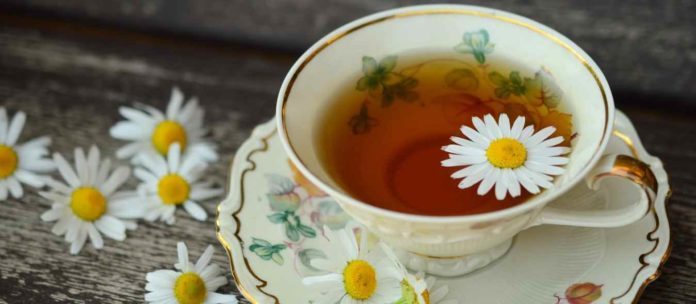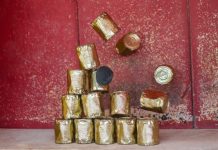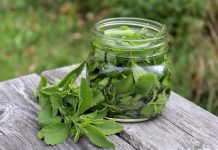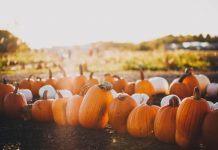The increased obligation you have in your life is one of the greatest advantages of homesteading. You determine what to eat, how to make money, how to educate your kids, and how to treat and prevent diseases.
It is always terrifying to take responsibility for our personal well-being. It is quick to think about doing anything wrong and society views alternative healthcare as inadequate or worse – unsafe.
If you are worried, keep these things in mind:
- All medicines are derived from plant material.
- You can start small, adding more herbal health care as your knowledge increases.
- There are countless resources you can turn to for guidance.
Herb Classifications
You need to realize that there are thirteen different classifications of herbs to feel comfortable using herbs for medicinal purposes. While there may be overlap, each herb group does something special to the body.
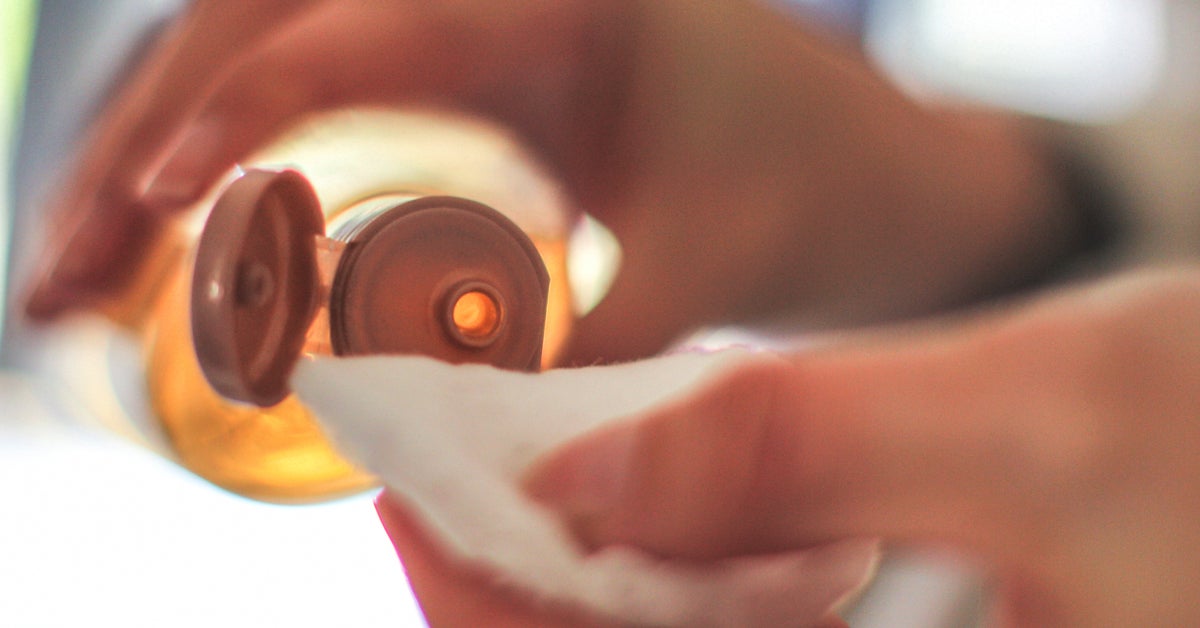

Astringents are the first category. These are herbs for drying and drawing. Internally, they may be used to tone mucous membranes and treat conditions of excess such as diarrhea. They may also be used to tone the skin externally, or to pull splinters and stingers out.
Aromatics are the second category of herbs. These herbs have essential oils that are volatile and thus have powerful aromas. In general, aromatics are used to assist the digestive system, clean the respiratory tract or make the lungs sputter.
Alternatives the third category of herbs is the herbs you should use when you are feeling sick and want to support your body’s natural defenses.
Adaptogens are the fourth category of herbs. These herbs help your body handle stress, restore overall emotional balance, and strengthen your body’s functioning as a whole.
Bitters are the fifth category of herbs. They are used to stimulate the appetite and aid digestion by encouraging the production of gastric juices.
Nervines are the sixth category. Nervines support and calm the nervous system. They are an effective treatment for muscle tension, circular thoughts, and anxiety.
The seventh category of herbs is carminatives. These herbs help to expel gas from the digestive system.
Demulcents are the eighth category. Demulcents are herbs that create a slime that coats and soothes mucous membranes and treats dry conditions. In water, these herbs are best extracted as an infusion.
Next are diaphoretics. The ninth category of herbs is taken in order to raise body temperature, making you sweat and increasing circulation.
Diuretics are the tenth category of medicinal herbs. Diuretics help increase urination.
Emollients are the eleventh category of herbs. They are similar to demulcents, but they are used topically to prevent or treat skin conditions.
Expectorants are herbs that break up mucus in the lungs and expel it more effectively.
The final category of herbs is called tonics. Tonics can be safely taken on a regular basis to support overall health.
Now that you know the thirteen categories of medicinal herbs, you need to know some of the different preparation methods, but first, a note on dosages.
Related: 14 Powerful Natural Remedies For A Sinus Infection
Herbal Remedy Dosages
Preparations for herbal remedies would include a prescribed dose. I find it best to take the minimalist method, starting with the smallest quantity suggested and increasing if necessary. I stick to Clark’s Rule when it comes to herbal treatment for children. This rule advises us to take the weight of the child in pounds, divide by 150 and multiply that amount by the smallest adult dosage prescribed.
Herbal Extracts: Teas, Infusions, Decoctions, and Brews
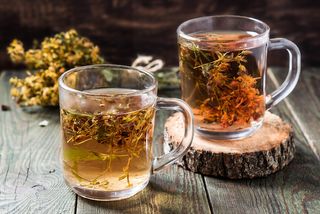

Herbal extracts form the foundation of all herbal preparations. This basically means you are removing from the less beneficial plant materials the medicinal components of the herb. Extracts can be produced as a powder or a liquid, but liquid extracts are less processed and thus more effective.
Tea is the first type of herbal extract. Teas are extracts that are produced as a solvent using water. Four kinds of tea extracts are available: sipping teas, infusions, decoction, and brews.
You’re almost definitely familiar with sipping tea already. In color and taste, these teas are light. They are made by pouring over 1-3 teaspoons of dried herbs with boiling water, cover and leave for up to five minutes to steep. Strain the herbs out, sweeten them with the honey. It is possible to regularly drink herbal teas.
Related: How To Make a Powerful Calendula Extract to Keep in Your Medicine Cabinet (with pictures)
Infusions and decoction are the second and third kinds of tea extracts. These will be darker in color than sipping teas and richer in taste. The more delicate plant pieces, such as the leaves and flowers, are rendered into infusions. Decoction is produced from the material of the hardy plant, such as roots, bark, and hard seeds. Infusions and decoction usually involve 4 cups of water for 1⁄4 cup of the dried herb. Pack the plant material in a glass jar to make an infusion, and cover it with boiling water. Enable up to 30 minutes for steepness.
Place the plant material in cold water to make a decoction and bring it to a boil. Simmer for 20 minutes to an hour, depending on your desired intensity.
A brew, which is a distilled infusion or decoction, is the final type of tea extract.
You may also use infusions and decoctions externally in herbal washes and compresses, in addition to using the various tea preparations internally. The outward use of herbal tea extracts makes it possible to absorb the medicinal components of the herbs directly into the skin.

In baths, herbal washes are used for sinus rinses face vapors and as mouthwashes. Using the herbs of your choice, simply make a good infusion or decoction. Once the plant content is squeezed out, use the liquid in your herbal treatment. Soak up the whole body, apply the liquid to your bath water. If you want facial steam, carry the liquid to a simmer and stand with a towel draped over your head and shoulders over the steaming pan of herbal extract. Add a small amount of sea salt and use in a neti pot as advised by the maker, if you want to use an infusion as a sinus rinse.
Another care option is a compress that uses infusions and decoction externally. Compresses are ideal for conditions such as pink eyes or tense muscles that need several treatments a day for short periods of time. Start with an infusion or decoction that is very solid. In the hot liquid, soak a cloth. Squeeze out the excess fluid and add it to the area affected. The compress should be very warm, you don’t want to cause a burn, but not too hot!
Related: Using Herbal Remedies on the Homestead
Herbal Extracts: Tinctures


A tincture is considered the second way to produce a herbal extract. A tincture is a highly concentrated alcohol-containing herbal extract, vegetable-based glycerin or vinegar as a solvent. Fill a 1⁄2 glass jar full of dried herbs to make a simple tincture and cover with the solvent of your choosing. Seal tightly and allow for four weeks of maceration. Strain, bottle, and label. In general, the tincture dose is 1⁄2 teaspoon up to three times a day.
By adding honey to the finished product at a ratio of 2:1 (tincture: honey), you may transform your tincture into an elixir.
Oxymels
Oxymels are an old-fashioned type of tincture enjoying a comeback. Depending on the herbs that you select, you can use oxymels for short-term conditions or for everyday use as a preventive measure.
Fill a glass jar 1⁄2 full of dried herbs to produce an oxymel. Combine equal amounts of honey and apple cider vinegar and pour over the spices, leaving a headspace of 1″. Tightly cap it with a plastic lid. Store in a cold, dark place for 6-8 weeks, shaking daily. Strain the herbs out and pour into sterilized glass bottles with the liquid. It’ll last for up to a year. 1 teaspoon to 1 tablespoon up to three times a day is the popular dose for oxymels.
Herbal Remedy Syrups
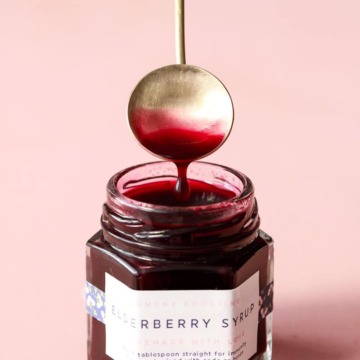

Syrup is another preparation method that is quick to prepare because of the delicious taste, it is very effective and convenient to administer to young children.
For a shelf-stable syrup, use one part tea to one part honey. You can reduce the amount of honey if that seems too sweet, but you will need to make the syrup in small batches and put the syrup in the refrigerator. I opt for the shelf-stable, good-tasting medication and use the prescribed amount of honey since this is not a daily drink, but used during periods of illness.
One of the safest remedies for sore throats and coughs is elderberry syrup. Combine 2 cups of elderberries and 4 cups of water, 1 stick of cinnamon and 1 teaspoon of grated ginger root. Get it to a boil with the mixture. Reduce the heat and leave for 40 minutes to simmer. Remove from the heat and mash the liquid with the berries. Strain through a cheesecloth, all the juice is squeezed out. Measure the liquid. Attach equivalent amounts of honey. Heat gently until well blended, be careful not to bring it to a boil. Flask in sterilized jars.
Liniments, Ointments, and Salves


External herbal therapies are also based on herbal extracts. With a herbal extract, liniments, ointments, and salves all begin.
Topical herbal remedies are very safe for everyday use and are gentle enough. As with internal herbal preparations, based on the particular need you are addressing, choose the herbs you will use in your product.
Make an ointment if you would like to create a creamy lotion. Ointments are made by mixing a 1:4 ratio of a herbal infusion with almond, olive, or coconut oil. This cream is highly hydrating and is quickly absorbed into your skin.
Salves are not absorbed into the skin immediately, they act more like petroleum jelly. But, for painfully dry, cracking skin, it’s hard to beat salves.
Combine one cup of oil with 1-2 ounces of beeswax on top of a double boiler to produce a salve. Gently warm until the beeswax is dissolved into the oil absolutely. Pour into glass jars or tins easily. It will last up to a year if you keep it in a cool place.
Homesteading is a lot of work, but it doesn’t have to be about adding herbs to your everyday life. Start small, learn as you go and trust yourself, as with any other homestead project!



